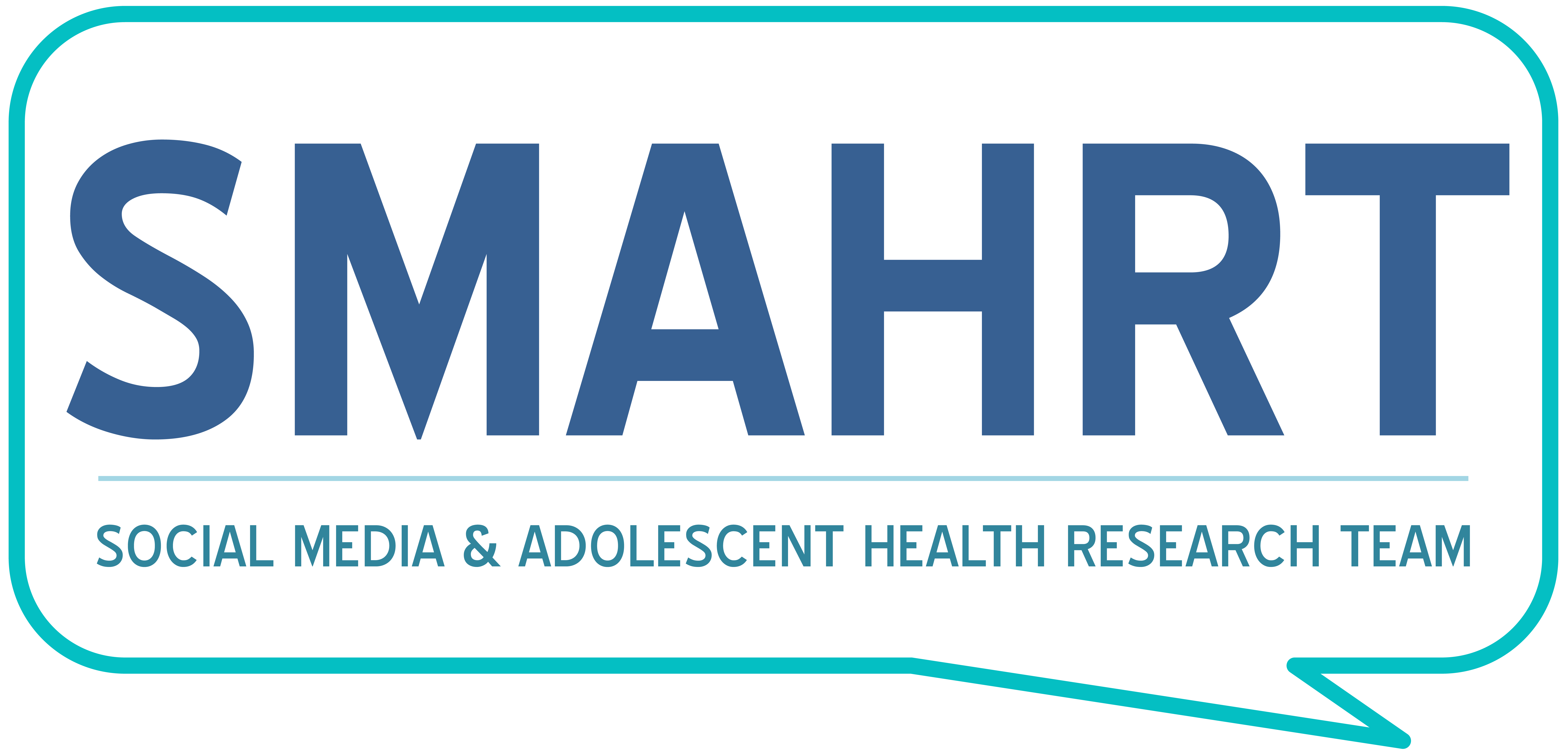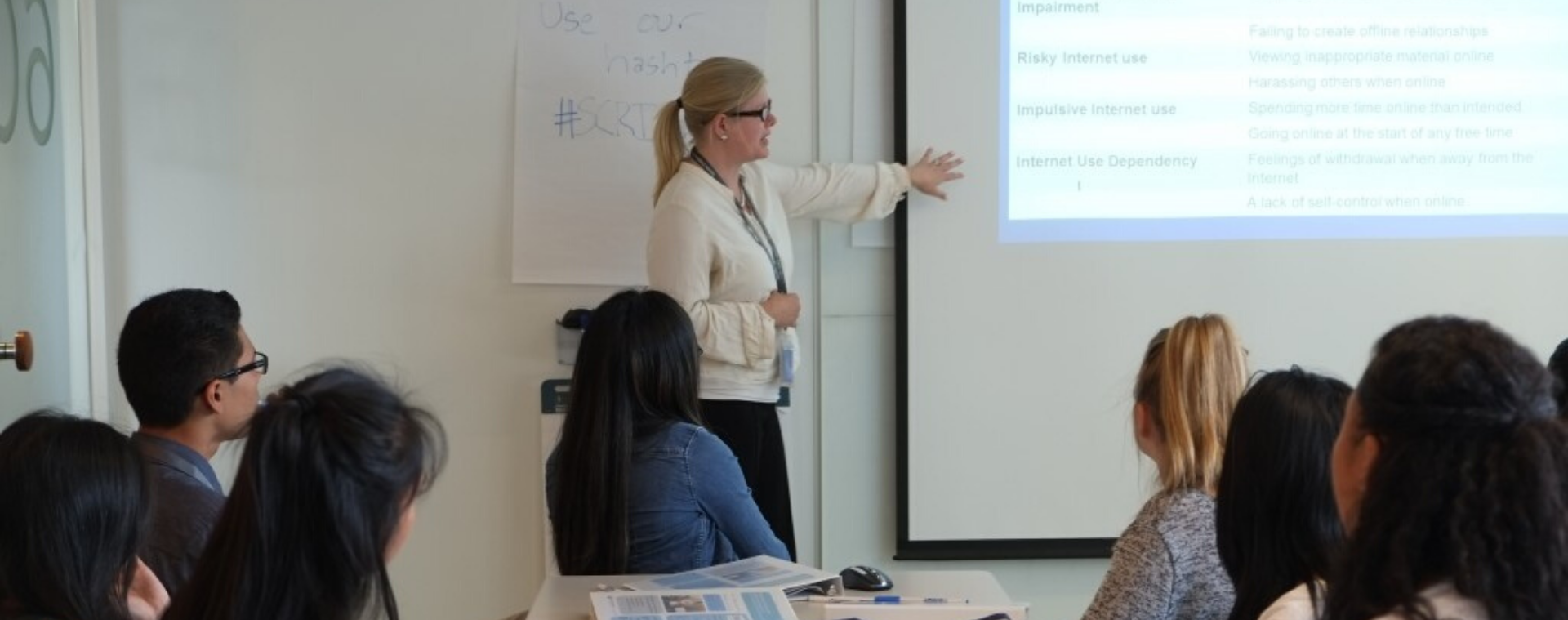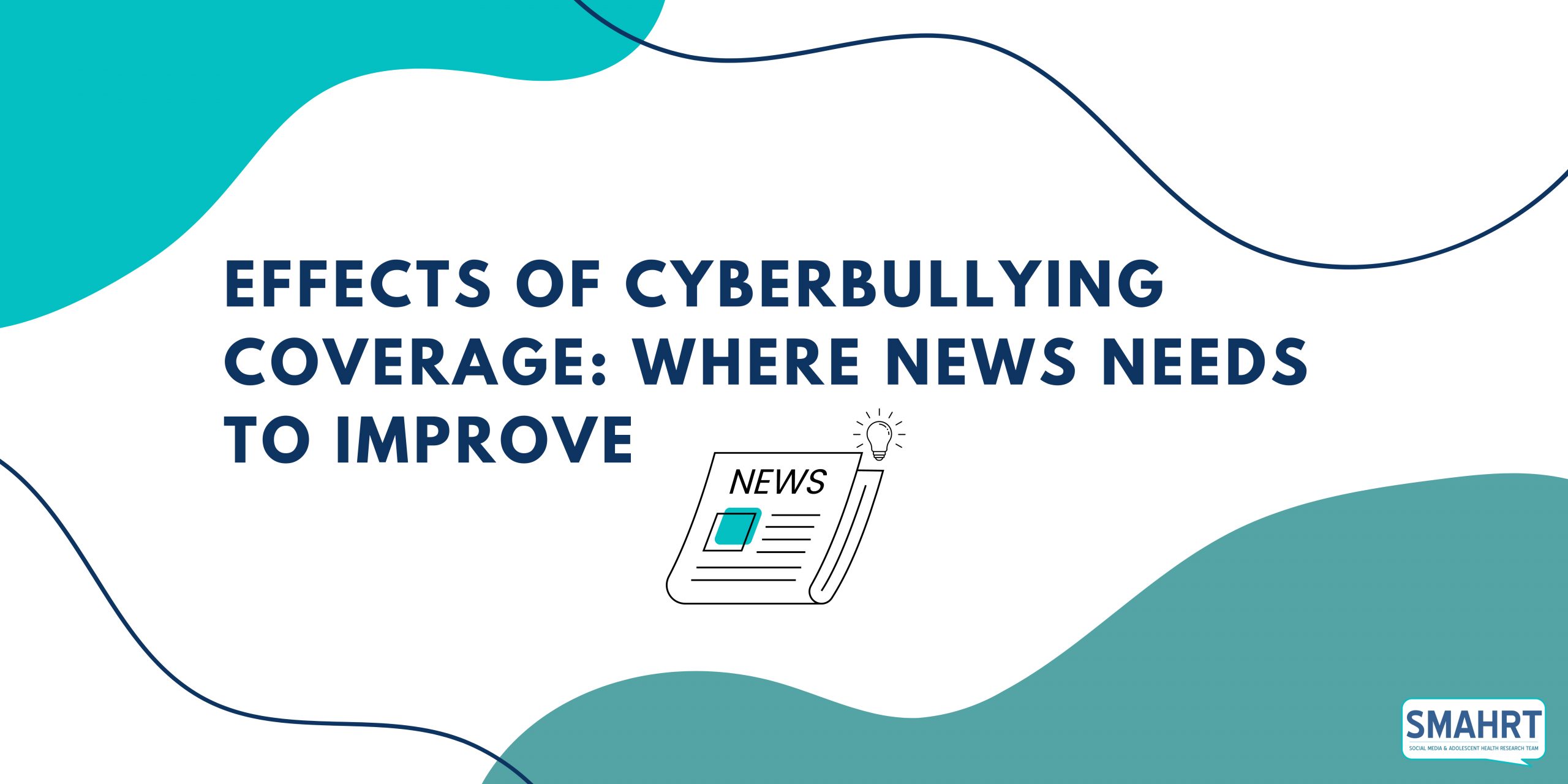Written By: Isabel Garlough-Shah
Since 2019, researchers at SMAHRT have investigated the topic of bullying in news media. The purpose of the initial research was to understand how news media cover sensitive topics such as bullying and cyberbullying.
Exploring this type of media is essential as past research has shown how news coverage on subjects such as suicide, tobacco use, and infectious disease outbreaks is influential on its readers (Moreno et al., 2019). With this in mind, it’s important to note what kinds of messages are seen throughout bullying and cyberbullying articles. Additionally, what are the effects of these messages on intended audiences?
In the first study, the SMAHRTeam conducted a content analysis using the Linguistic Inquiry and Word Count (LIWC) software program (Moreno et al., 2019). The SMAHRTeam noted two different approaches to languages within bullying news media: Fear-Based and Public Health-oriented.
Now what does this mean? Fear based approaches were defined in this study as news articles with a focus on negative consequences or depicting bullying scenarios as hopeless or inevitable (Moreno et al., 2019). Whereas, Public Health-oriented were defined as articles that have a priority on prevention measures, community engagement or practical approaches (Moreno et al., 2019).
There were three major findings in this study. The first finding showed bullying and cyberbullying news media similarities; both included emotional language that was positive and negative. Additionally, both subject areas had a similar number of terms related to power and reward. The second finding demonstrated the differences; cyberbullying articles more frequently used words related to anxiety, anger, and death. The last and quite significant finding revealed that, “a greater number of cyberbullying articles were Fear-based (41.4%) than were bullying articles (19.5%)” (Moreno et al., 2019).
These findings are fascinating to say the least, however, how does this impact audiences who read these stories? In the second study in this topic area, the SMAHRTeam interviewed the target audience for these kinds of articles: parents and adolescents (Moreno et al., 2020). In qualitative interviews participants read through two articles on bullying: the first was a fear-based story and the second was public health-oriented.
Participants had vastly different feelings after reading both articles. In the case of the fear-based article, 72% of parents in the study felt negatively after reading (Moreno et al., 2020). Adolescents had similar results as 76% felt or reacted negatively (Moreno et al., 2020). Participants were typically upset by these articles and felt that this type of cruelty shouldn’t be happening. These articles left readers feeling hopeless and unsure of what to do.
The public health-oriented article had a completely different reaction among participants. After reading this article, 48% of adolescents had a positive reaction; many described feelings of empowerment (Moreno et al., 2020). This extended to parents in the study as 80% had positive responses (Moreno et al., 2020). This article gave readers hope and solutions for bullying scenarios.
After reading this set of articles, participants wanted to see more public health-oriented stories in the news. This was because public health-oriented news gave power and agency; parents and adolescents were given tools to prevent or halt bullying. In fear-based articles, participants were left defeated; all participants could focus on was the tragic events in the article.
If audiences want more of these solution-based articles, why aren’t journalists providing them? These studies give the opportunity for researchers to collaborate with journalists to prioritize public health-oriented news media. However, future studies should interview journalists on covering cyberbullying to understand why most stories are fear based.
Reference
Moreno, M. A., Gower, A. D., Brittain, H., & Vaillancourt, T. (2019). Applying Natural Language Processing to Evaluate News Media Coverage of Bullying and Cyberbullying. Prevention Science, 20(8), 1274–1283. https://doi.org/10.1007/s11121-019-01029-x
Moreno, M. A., Hyzer, R. H., Bushman, M. E., Gower, A. D., & Pletta, K. H. (2020). Adolescent and Parent Emotions and Perceptions Regarding News Media Stories About Bullying: a Qualitative Study. International Journal of Bullying Prevention, 3(4), 270–277. https://doi.org/10.1007/s42380-020-00083-2


